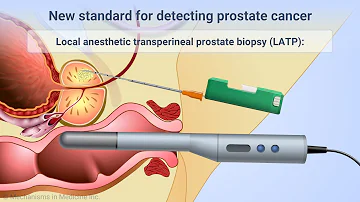
What percentage of prostate biopsies are cancer?
Three out of 4 prostate biopsies are negative for cancer. In men with a PSA less than 10, only 9% have aggressive cancer. Gleason score is used to define tumor grade.
What are the three types of prostate biopsies?
Prostate biopsies are carried out in several different ways. The most commonly employed techniques are transrectal ultrasound (TRUS) guided systematic biopsy of the prostate, transurethral biopsy and transperienal prostate biopsy.
Should I worry about prostate biopsy?
Prostate biopsy risks There are risks associated with prostate biopsies, but physicians can take steps to reduce those risks. Risks and ways to manage them include: Infection: The most serious risk of a prostate biopsy is the risk of infection, including urinary tract infections and, less commonly, sepsis.
Can PSA go down with prostate cancer?
A total of 43.0% of men with prostate cancer showed a PSA decrease below their baseline level. Short-term decreases in PSA may occur in men with prostate cancer, including high-grade cancer, and so should not influence the decision to proceed to prostate biopsy.
What happens if prostate biopsy is positive?
If prostate cancer is found on a biopsy, it will be assigned a grade. The grade of the cancer is based on how abnormal the cancer looks under the microscope. Higher grade cancers look more abnormal, and are more likely to grow and spread quickly. There are 2 main ways to describe the grade of a prostate cancer.
What is a normal PSA level for a 70 year old?
3.5-4.5: Normal for a man 60-70 yrs. 4.5-5.5: Normal for a man 70-80 yrs.
What is an extremely high PSA level?
More than 50% of men with a PSA value higher than 10 ng/ml have extra-prostatic disease. Twenty percent of men with a PSA higher than 20 ng/ml and 75% of those with a PSA higher than 50 ng/ml are found to have pelvic lymph node involvement [4].
How accurate is a prostate biopsy?
- Although it provides early diagnosis, the PSA blood test has a low specificity (high false positives) with about 75 percent of all PSA positive results ending up with negative biopsies that do not find cancer.
What to expect during a prostate biopsy?
- During a prostate biopsy, a doctor will use a needle to take several small samples of prostate tissue. They will use an ultrasound probe to guide the needle. They may also use anesthesia to numb the area beforehand. The doctor will insert the probe into the rectum to obtain an image of the prostate gland.
Do I really need to have a prostate biopsy?
- Prostate biopsies are painful and uncomfortable weeks after the procedure. Despite that, you may still need one. A prostate biopsy can cause erectile dysfunction (ED) in some cases. While I understand no man wants ED, a biopsy is the ONLY way to confirm if you have prostate cancer or not.

